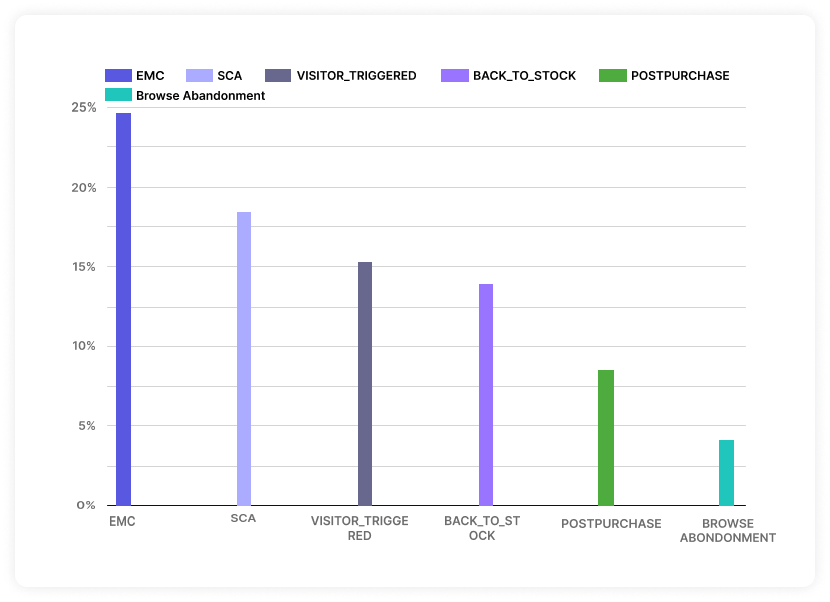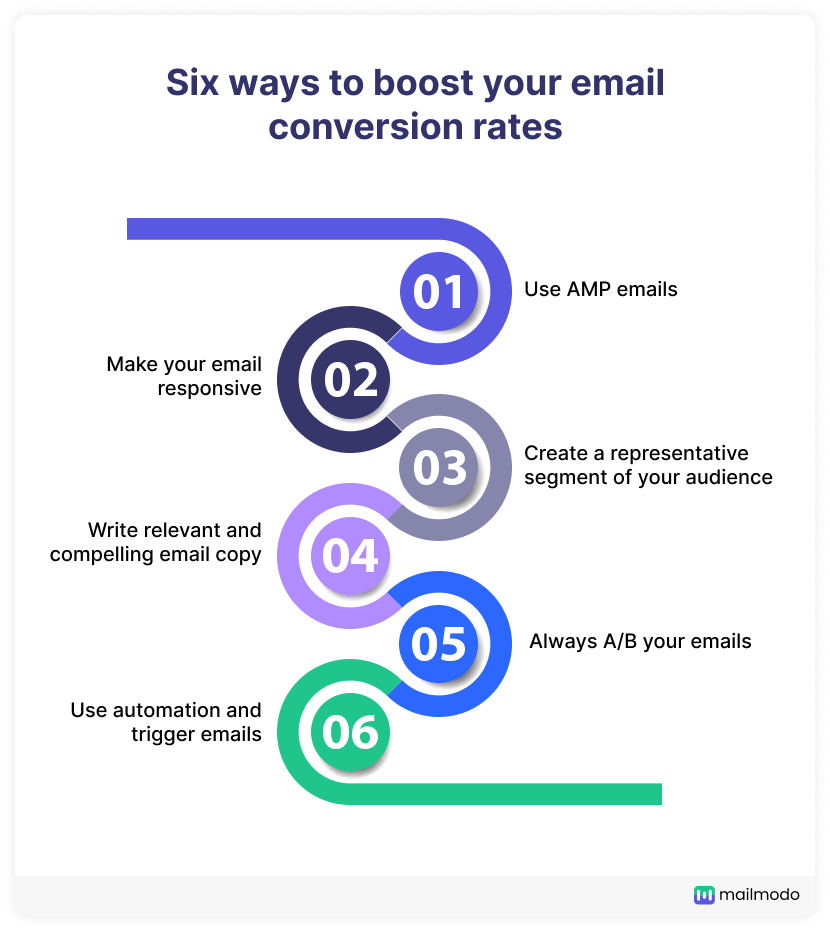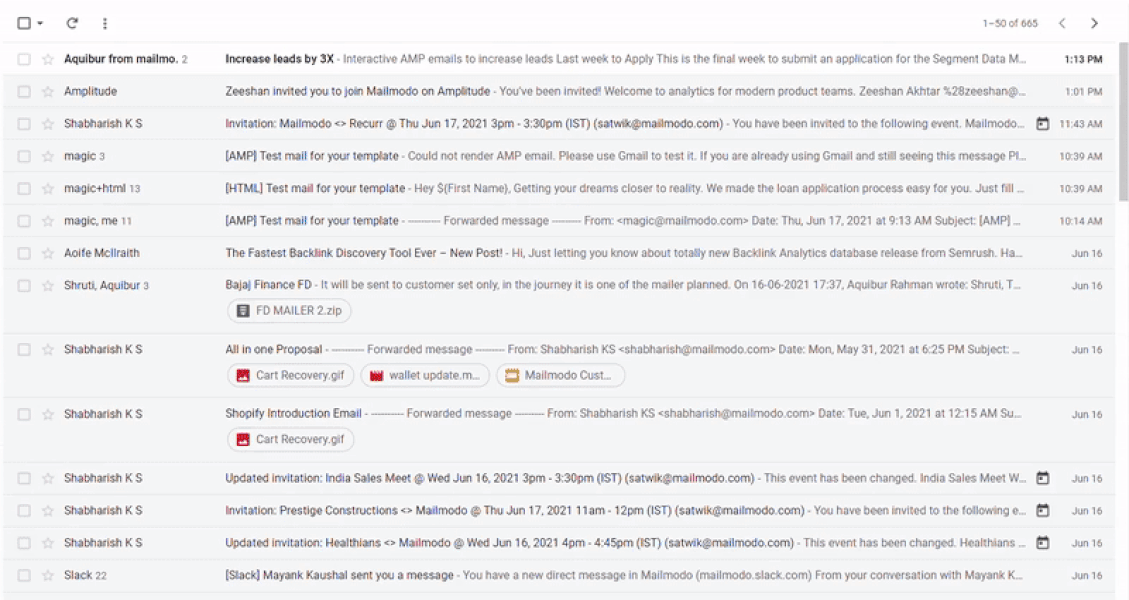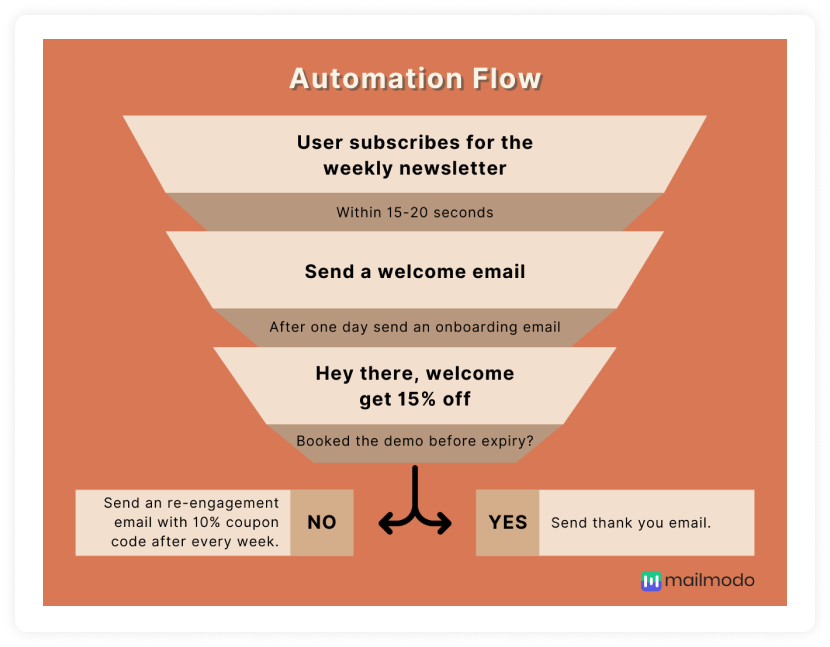When Jane sent out the first ten email campaigns, she had done her due diligence. No wonder her delivery, opens, and clicks were all through the roof. But unfortunately, the downloads never showed up in emails.
Jane felt there was something she was missing. How could such a perfect campaign lead to zero results?
After some research, Jane discovered something called email conversion rate. This number told her what was wrong. And it highlighted the value of her campaign in real life, which was not much.
However, Jane didn't know how to change this rate? What could she change in the email that could improve her conversion rate?
If you were ever in a position like Jane's, this guide would help you understand the different parameters and factors that you can leverage to boost conversions.
Table of contents
Six ways to boost your email conversion rate
- 1. Use AMP emails
- 2. Make your email responsive
- How to make your emails responsive to boost conversions?
- 3. Create a representative segment of your audience
- How to segment your subscriber for more conversions?
- 4. Write relevant and compelling email copy.
- How to craft a compelling email copy to get more conversions?
- 5. A/B test your emails
- How A/B testing improves your email conversions?
- 6. Use automation and trigger emails
- How can automation boost your email conversions?
What is the email conversion rate?
Email conversation rate is the percentage of subscribers who took the action you wanted them to take. These actions might be a subset of your larger business objective.
For example, it may be to get registration for a webinar or to grow your email list through newsletter subscription.
Typically not all users will take the desired action.
For instance, If you send a survey in an email, some might click on the link but not fill out the survey. But still, it's some progress. This progress reflects micro conversions.
Metrics such as email open rates and clickthrough rates help measure micro-conversions. And those who did complete the form submission will be macro conversions. Such conversions are more important for any organization as they reflect the success of your email marketing campaign.
Related guide: A Complete Guide to Identify and Optimize Micro Conversions
Now, let's talk about how to calculate email conversion rates.
How to calculate the email conversion rate?
After determining your goals, you can calculate the conversion rate using this formula:
Email conversion rate = (Number of conversions / Number of delivered emails) × 100
- The number of conversions refers to the desired action that your user took.
- The number of delivered emails is the number of emails sent minus the number of bounces.
For example, if you are an e-commerce brand and send 1000 promotional emails in a week and 100 of them get bounced, the number of delivered emails will be 900. Out of these 900, if 450 people took the desired action or clicked on your CTA, your number of conversions would be 450.
Thus, your conversion rate will be (450 / 900) X 100 = 50%.
Is that a good email conversion rate or bad? That's difficult to ascertain. Let's discuss it in a bit more detail.
What is a good email marketing conversion rate?
A good email marketing conversion is when you get users to take the action you desire while keeping minimal costs. It's also how you get a higher ROI on your email campaigns.
Email conversion rate is a tricky metric, and it varies depending on your industry, the goals you are trying to achieve, the type of email campaigns you send, and their timings.
But, there are email conversion rate benchmarks you can look out for in your specific industry to get an idea of whether you are moving in the right direction or not.
Barilliance research on email conversions of e-commerce brands shows the following insights:

It's evident that email my cart (EMC) and shopping car abandonment (SCA) had the highest conversions as these users showed a purchasing intent, and these emails just pushed them towards completing their purchase.
Another research by Ruler Analytics shows the average email conversion rate by industry. As most businesses are looking to generate more leads, these data points can serve as a standard you can use to measure your campaign's performance.

Lead conversion rate is higher in B2B than in other industries because the sales cycle is often longer due to the involvement of many decision-makers. While in industries like B2C, the conversion rate is lower, a decision-maker is an individual.
Six ways to boost your email conversion rate

Here we have discussed six ways that you can use to increase email marketing conversion rates:
1. Use AMP emails
AMP is the new buzzword in email marketing. It's paving the way for a more interactive email experience for the recipients.
One of the biggest factors impacting conversion is the time and steps required to complete the process. Users get a link in the email and get redirected to a browser to complete the process. This creates friction, discouraging the recipient from completing the action.
But, AMP emails reduce this friction by bringing a web-like experience within the email. Here's an example of how the recipient can book a demo within the email. See how easy and hassle-free the whole process is?

Get this demo booking email template.
In our 2021 State of Email Report, 23.7% of marketers across different industries revealed nearly a 10% increase in their email conversions with AMP emails due to the elimination of friction within the email.
3) 23.7% of the people who did use AMP email found nearly a 10% increase in their email conversions clarifying that lesser friction within email leads to more conversions. pic.twitter.com/XDGERf5d9G
— Mailmodo (@mailmodo) February 2, 2022
How does AMP email boost email conversions?
- AMP emails increase engagement as users can book a demo, fill out forms and surveys, complete the transaction, and play interesting games within the email.
- These emails help you create an interactive user experience by including elements like image carousel, accordions, calendar, countdown timers, etc.
- As the email experience is friction-free, users are more likely to take the desired action, thus, boosting your conversions.
2. Make your email responsive
A report published by Litmus reveals that 43.5% of emails were read on mobile as of Q4 in 2020. As most emails are made for desktops, email marketers need to make emails that look good on every device, especially on mobile devices.
Email should be designed for mobile-first when your audience is likely to open on mobile more often. This means larger font sizes that are easier to scan and read.
-Matthew Smith, Founder, Really Good Emails
How to make your emails responsive to boost conversions?
- Use the right email marketing software to create responsive emails.
- Consider using a single-column layout for better legibility. Two or more columns can create confusion.
- If you use images, keep their size small to reduce the email load time.
- Make sure to use the right-sized fonts for better readability.
Related guide: How to Create Responsive Email Design For Better User Experience
3. Create a representative segment of your audience
According to Mailchimp, segmented emails can earn 100.95% higher email clickthrough rates than non-segmented email campaigns.
If you send the same message to every subscriber, they won't find it worth their time, and your email will end up in their trash box. Thus, segmenting the audience is crucial to sending targeted and relevant emails to boost conversions.
How to segment your subscriber for more conversions?
- Analyze your analytics data and define criteria to segment.
- You can segment your subscriber based on their demography, behavior, geography, and psychographics.
- Ensure to group audience with similar traits in the right segment
- Create personalized emails for individuals in each segment to make emails more humanized.
4. Write relevant and compelling email copy.
It's a widespread saying that one should not judge a book by its cover. However, your subject line and preview text become that cover in email marketing. And your users do judge you by looking at these two elements.
Not only this, but after they open your email, everything they see is part of your email copy - images, text, CTA, etc. Thus, you must write compelling and valuable content for your audience to boost your conversions.
How to craft a compelling email copy to get more conversions?
- Create urgency and curiosity in your email subject lines.
- Make sure to check the tone, wording, and style of your email writing.
- Use visual elements such as carousels, gifs, icons, and emojis, to highlight content in your emails.
- Focus on your target audiences, interests, and behaviors while writing your email copy.
5. A/B test your emails
A/B testing your emails is a great way to ensure what's working and where you need to make the changes. You can understand which kind of emails resonate most with your audience.
As per Hubspot analysis, brands that always include an A/B test in their emails generate an ROI of 48:1.
How A/B testing improves your email conversions?
- Help you make data-backed-up decisions by eliminating the guesswork.
- Test out different email versions on different audience segments and determine which resonates most with them.
- A/B testing allows you to test different elements from subject line to email call to action. Once you identify which elements work best, you can incorporate them into your email campaigns and drive more conversions.
Related guide: How to Get Started with Email A/B Testing
6. Use automation and trigger emails
As per the DMA report, triggered campaigns generate over 75% of email revenue.
Using automation, you can send trigger emails when a user takes a specific action.
An automated email flow can look like this:

How can automation boost your email conversions?
- Create email sequences such as onboarding, re-engage, an email sequence, etc.
- Setup behavioral triggers to send emails to the right users at the right time.
- Target users throughout their lifecycle journey and keep the engagement going. It helps build trust and loyalty.
Wrapping up
Your email marketing campaign should not look like you are just trying to sell and make money in a consumer-driven economy. Instead, your focus should be on providing value to your audience by understanding their interests and needs. In this way, your emails will be able to compel them to take the desired action and increase your email marketing ROI.
To do this, you can sign up for Mailmodo, which provides various interactive email templates. You can also track and analyze your email metrics with Mailmodo.


